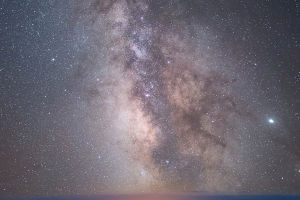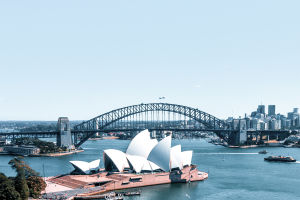Deserts have always topped the list of inhospitable terrain on earth, and in our view, the desert has always been far from the frontier. The development of transport has made desert travel feasible and easy.
The following is an introduction to some of the world's great deserts.
1. The Taklamakan Desert, located in the centre of the Tarim Basin in southern Xinjiang, is the largest in China.
2. The Sahara Desert, which stretches across the northern part of the African continent, is bordered by the Atlantic Ocean to the west, the Atlas Mountains and the Mediterranean Sea to the north, the Red Sea to the east, and the semi-desert steppe transition zone of the Sahel to the south.
3. The Arabian Desert is located in the eastern part of the Sahara Desert in North Africa, east of Egypt, between the Nile Valley, the Suez Canal, and the Red Sea, also known as the Eastern Desert.
4. The Libyan Desert is located in the northeastern part of the Sahara Desert, including central and western Egypt and eastern Libya.
5. The Australian Desert, located in the southwest of Australia, consists of four parts: the Great Sandy Desert, the Victoria Desert, the Gibson Desert, and the Simpson Desert.
6. The Gobi Desert, also known as the Great Gobi, is located between the People's Republic of China and Mongolia and is the northernmost desert in the world.
7. The Patagonian Desert is located in Argentina in southern South America, east of the Andes.
8. The Rubhari Desert covers the entire southern region of Saudi Arabia and most of the territories of Oman, the UAE, and Yemen, also known as the Great Arabian Desert.
9. The Kalahari Desert is located in the dry interior of southern Africa, occupying almost all of Botswana, the eastern 1/3 of Namibia, and the extreme north of the Cape Province of South Africa.
10. the Great Sandy Desert, the northern part of the Western Desert of Australia, south of the Kimberley Plateau, east of the Pilbara region, and extending east of the Northern Territory boundary.
11. The Great Basin Desert, covers the east, the Sierra Nevada Mountains to its west, the Sonoran and Mojave Deserts to the south, and the Columbia Plateau to its north. It is also a cold desert with low rainfall and an arid climate total area of 190,000 square miles and is the largest in the United States.
The Rocky Mountains lie to its
Here are some precautions to take when travelling in the desert.
1. Sun protection. Sun protection is the most important thing when you go to the desert. Because the desert has a reflective effect on the sun, the strong sunlight ground temperature will rise. Therefore, it is essential to protect yourself from the sun when travelling in the desert.
2. Electronic product protection. To go to the desert tourism must pay attention to the sand on the erosion of electronic products, once careless sand on the electronic products inside will damage electronic products, so be careful to pay attention to it.
3. Anti-biting. In the desert, there are a lot of small bugs, so in the desert, travellers should wears tighter clothes, to prevent sand or small insects from biting themselves to prevent poison.
4. Eye Protection. The desert is full of tiny particles, so if there is wind in the desert, you should put on glasses or an eye patch to make it safer, if the sand gets in your eyes, it will be more serious. So we should pay extra attention.
5. Prevent heatstroke. Heatstroke is a big no-no in desert tourism. You need to take medicine to prevent heat stroke. In case of heatstroke in the desert, you will have to delay the treatment.
6. Prevent accidents. There are many recreational facilities in the desert, such as camels, sand motorbikes, sand racing, and many more.
When riding camels, it is important to pay attention to the important matters of getting on and off the camels, and when riding sand motorbikes, you should remember the precautions of the instructor to prevent accidents from happening.


